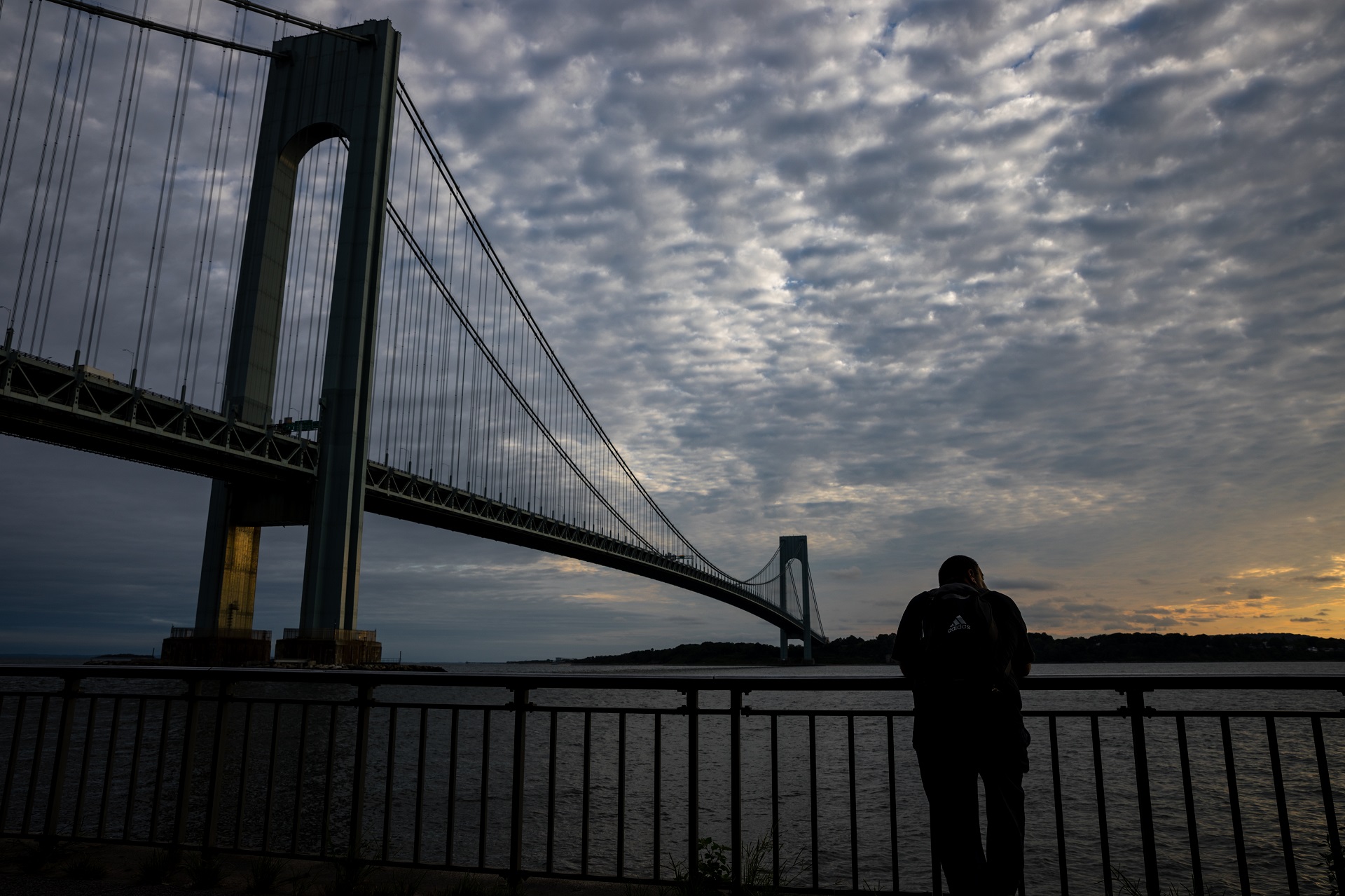Two-way bridge toll would bring $10-15 million to MTA, pols say
Funds to be used to improve buses, subways

U.S. Rep. Max Rose (at podium) was joined by several elected officials at the press conference, all of whom spoke out in favor of bringing back two-way tolls on the Verrazzano-Narrows Bridge. Photo courtesy of Rose’s office
Bringing two-way tolls back to the Verrazzano-Narrows Bridge would have a big economic benefit that could wind up giving residents of Brooklyn and Staten Island better transit service, according to U.S. Rep. Max Rose, one of three lawmakers pushing legislation to scrap the span’s one-way toll system.
Rose claims that reinstituting two-way tolls would provide the MTA, the agency that operates the city’s bridges and tunnels, with an additional $10-$15 million a year – money that would go toward repairs and upgrades of the transit system.
Under the current tolling system, motorists drive from Staten Island to Brooklyn for free, while drivers headed the other way pay the toll.
